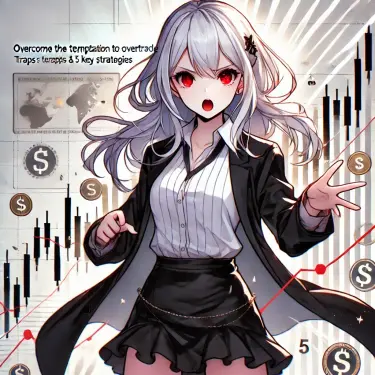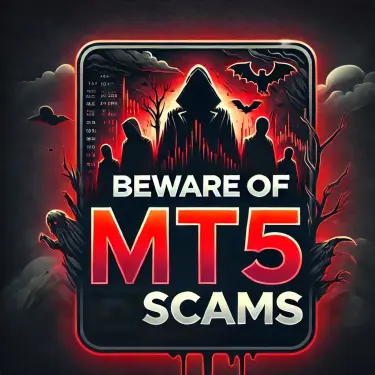A Ponzi scheme is a fraudulent investment scam that collects funds from investors by promising abnormally high returns. This blog provides a detailed explanation of how Ponzi schemes work, their characteristics, how to identify them, their dangers, and the warning signs before collapse — along with when to escape from them. It’s packed with essential information every investor should know, so please read carefully.
1. What Is a Ponzi Scheme?

A Ponzi scheme is a fraudulent investment model that collects money from investors by promising extremely high returns. The term originates from the 20th-century swindler Charles Ponzi, whose methods have since been imitated in numerous modern scams.
Basic Principles of Ponzi Schemes
The essence of a Ponzi scheme is that it generates no real investment profits. The scammer attracts new investors by promising high returns, collects their funds, and then uses that money to pay dividends or principal to earlier investors. As long as new investors continue to join, the fraudster can keep deceiving others.
Main Characteristics of Ponzi Schemes
Ponzi schemes share several distinctive traits:
- Promises of Unrealistic Returns: They attract investors by offering returns that are abnormally high and far beyond normal market expectations.
- Guarantee of Principal: Scammers often claim the principal is fully guaranteed, making the offer seem highly appealing to investors.
- Early Payouts: At first, returns are paid as promised, giving investors confidence and encouraging further investment. However, these payments are simply redistributed from funds collected from new investors.
Risks of Getting Involved in a Ponzi Scheme
Investors lured into Ponzi schemes are often blinded by the illusion of easy profits. The early payouts build a false sense of security, leading investors to inject more money. However, the structure is inherently unsustainable and will inevitably collapse.
Dangers and Preventive Measures
The most dangerous aspect of a Ponzi scheme is that once new investors stop joining, the operator can no longer pay existing participants. This results in massive losses for many investors. In many cases, scammers disappear with the collected funds, leaving victims with no way to recover their money. To protect yourself, always be skeptical of investments promising “high returns” or “guaranteed capital.”
2. How to Identify a Ponzi Scheme

Recognizing a Ponzi scheme requires paying attention to specific red flags. Below are several common warning signs to help you detect fraud early.
Promises of Unrealistic Profits
One of the most obvious signs of a Ponzi scheme is the promise of excessive returns. For example, claims like “10% per month” or “50% per year” are clear red flags. In such cases, it is likely that no real investment is taking place — instead, funds from new investors are being redistributed to earlier ones.
Excessive Emphasis on Capital Guarantees
Be cautious of investment offers that place too much emphasis on “principal guarantees.” In most legitimate financial products, principal guarantees do not exist. Therefore, statements like “your capital is completely protected” should raise suspicion — especially when paired with phrases like “safe and secure.”
Encouragement to Start with Small Investments
Many Ponzi schemes encourage small initial investments, making the offer appear low-risk. However, over time, participants are pressured to invest larger sums. This tactic builds false confidence and often leads to major losses in the end.
Use of Referral Systems
Another common tactic is leveraging a referral system. Participants are rewarded for recruiting new investors, which accelerates the scheme’s growth. Unknowingly, investors become complicit in spreading the fraud.
Soliciting Investments in Overseas Real Estate
Particular caution is required with foreign real estate investment offers. When investing in properties located in inaccessible regions, verifying the legitimacy of the assets becomes difficult. Fraudsters often use fake documents or non-existent properties to solicit large sums of money.
Risks of Sublease Contracts
In real estate-related cases, sublease agreements promising exaggerated rental income also warrant caution. Claims like “earn above-market rent” are dangerous. In reality, many such properties remain vacant, resulting in disappointing or non-existent returns.
By keeping these warning signs in mind, investors can reduce the risk of falling victim to Ponzi schemes and protect themselves from potential financial harm.
3. Warning Signs Before a Ponzi Scheme Collapses

Ponzi schemes often collapse once new funds stop coming in. However, several warning signs usually appear beforehand. Recognizing these indicators early is crucial for investors. Below are some typical signs that a scheme may be on the verge of collapse.
Frequent Withdrawal Issues
When operators are preparing to abscond with the funds, withdrawal problems start occurring. These may include repeated system errors, unexplained delays, or vague excuses for non-payment. If such issues persist, it’s a strong signal that something is wrong.
Large-Scale Promotional Campaigns
When operators struggle to attract new investors, they often launch massive campaigns to bring in fresh capital. For example, promotions like “Invest this week and receive a special bonus” are often desperate attempts to collect last-minute funds. These are clear red flags indicating financial distress.
Delayed Communication
If previously responsive management starts delaying replies or ignoring inquiries, it’s a dangerous sign. A slowdown in communication can mean the operators are preparing to shut down operations or disappear. Take immediate caution if reaching them becomes difficult.
Delayed Dividend Payments
Ponzi schemes typically promise regular payouts. If these payments start being delayed, it suggests that new investments are drying up and the operator is running out of funds. This is often the prelude to total collapse.
Imposed Withdrawal Limits
Another warning sign is when withdrawal limits are suddenly introduced. Investors might be told, “Withdrawals are temporarily unavailable.” This tactic is used to prevent a rush of withdrawals while the operators prepare to vanish. Such restrictions should be treated as a major alarm.
These signs collectively indicate that a Ponzi scheme is nearing its end. Being vigilant about such red flags is essential to safeguard your assets.
4. When to Exit a Ponzi Scheme

If you find yourself involved in a Ponzi scheme, identifying the right moment to withdraw is critical for protecting your capital. This section explains the behavioral patterns of scammers before they “disappear,” and the actions you should take in response.
Sudden Promotional Campaigns
Operators often launch large-scale campaigns as their last effort to collect funds. These campaigns might offer unbelievably high returns or time-limited bonuses. Be extremely cautious of phrases like “This is your last chance” or “You’ll never get this opportunity again.” These are emotional triggers designed to extract as much money as possible before vanishing.
Introduction of Withdrawal Restrictions
If the operators suddenly introduce withdrawal restrictions, take it as an emergency signal. Preventing investors from accessing their funds is a common prelude to escape. Act quickly to find ways to recover your capital while it’s still possible.
Slow Response to Inquiries
As scammers prepare to flee, their response times slow down. If calls, emails, or messages go unanswered, you are likely at the final stage of the fraud. Treat this as your last chance to secure your remaining assets.
Frequent Withdrawal Errors
Repeated “technical issues” or “system errors” that block withdrawals are often deliberate. These are not real system bugs, but intentional obstacles to prevent investors from withdrawing funds while the operators prepare their exit.
Final Judgment
Missing these warning signs can lead to devastating financial losses. While predicting the exact timing of collapse is difficult, acting swiftly when multiple red flags appear can significantly increase your chances of protecting your funds. Stay alert, monitor closely, and withdraw all available funds at the first sign of trouble.
5. Notable Ponzi Scheme Cases

Ponzi schemes have appeared in many forms throughout history. Below are several major cases that demonstrate how such scams operate and what lessons investors can learn from them.
The Bernard Madoff Case
Overview
Bernard Madoff, former chairman of NASDAQ, operated one of the largest Ponzi schemes in history, spanning over 40 years. He promised investors an annual return of around 10%, using funds from new investors to pay earlier ones. The total damage reached approximately 4.5 trillion yen (about $40 billion).
Impact
This case sent shockwaves through the global financial industry, as numerous prominent investors and institutions were affected.
The BitClub Network Case
Overview
BitClub claimed to be a Bitcoin mining pool but was revealed as a scam that collected about 80 billion yen (over $700 million). The system relied heavily on referrals and recruitment, making sustainability impossible.
Impact
Thousands of investors were defrauded, and the arrested organizers lacked the ability to pay the promised returns.
The Japan Life Case
Overview
Japan Life sold overpriced health-related products and operated a fraudulent rental scheme that promised investors stable income. The total losses exceeded 210 billion yen, with many elderly victims targeted.
Outcome
The company was repeatedly penalized by authorities, and refunds to customers were almost nonexistent, causing widespread financial devastation.
The “Pumpkin Carriage” (Kabocha no Basha) Case
Overview
Smart Days Co. ran a women-only shared housing investment called “Kabocha no Basha,” guaranteeing rent payments for up to 30 years. Eventually, the project collapsed as the company could not sustain operations.
Bank Involvement
Suruga Bank financed the project heavily, resulting in severe financial losses for numerous investors.
The Clover Coin Case
Overview
48 Holdings marketed a cryptocurrency called “Clover Coin,” claiming it would increase 128 times in value within three months. Over 20 billion yen was collected before the operation was shut down.
Legal Outcome
Authorities ruled the scheme violated Japan’s Payment Services Act, and sales were terminated. Investors were left holding worthless tokens.
These cases highlight the diversity and dangers of Ponzi schemes. Understanding them helps investors recognize similar tactics and avoid future losses.
Conclusion
The key lesson from past Ponzi schemes is simple: never believe promises of high returns or guaranteed capital. Pay attention to warning signs such as delayed payments or unresponsive operators. Falling for a Ponzi scheme not only causes major financial loss but also damages personal credibility. Sound investment decisions require calm judgment and caution. By understanding the mechanics and warning signs of Ponzi schemes, you can protect yourself and invest safely.
Frequently Asked Questions (FAQ)
What are the main features of a Ponzi scheme?
The main characteristics include the promise of abnormally high returns, guaranteed principal, and early payouts that build false trust. The scheme relies on using funds from new investors to pay earlier ones — an unsustainable model.
How can I identify a Ponzi scheme?
Be wary of offers with unrealistic returns, excessive claims of capital protection, small initial investment requirements, referral incentives, foreign real estate solicitations, or sublease contracts with inflated rent guarantees.
What are the warning signs before a Ponzi scheme collapses?
Frequent withdrawal issues, aggressive marketing campaigns, slow responses, delayed dividend payments, and withdrawal limits are all major indicators of collapse. Recognizing these signs early gives you a chance to protect your assets.
When should I exit a Ponzi scheme?
When you notice sudden promotional campaigns, withdrawal restrictions, poor communication, or repeated technical problems during withdrawals, it’s time to act. Withdraw your funds immediately before the operators disappear.









